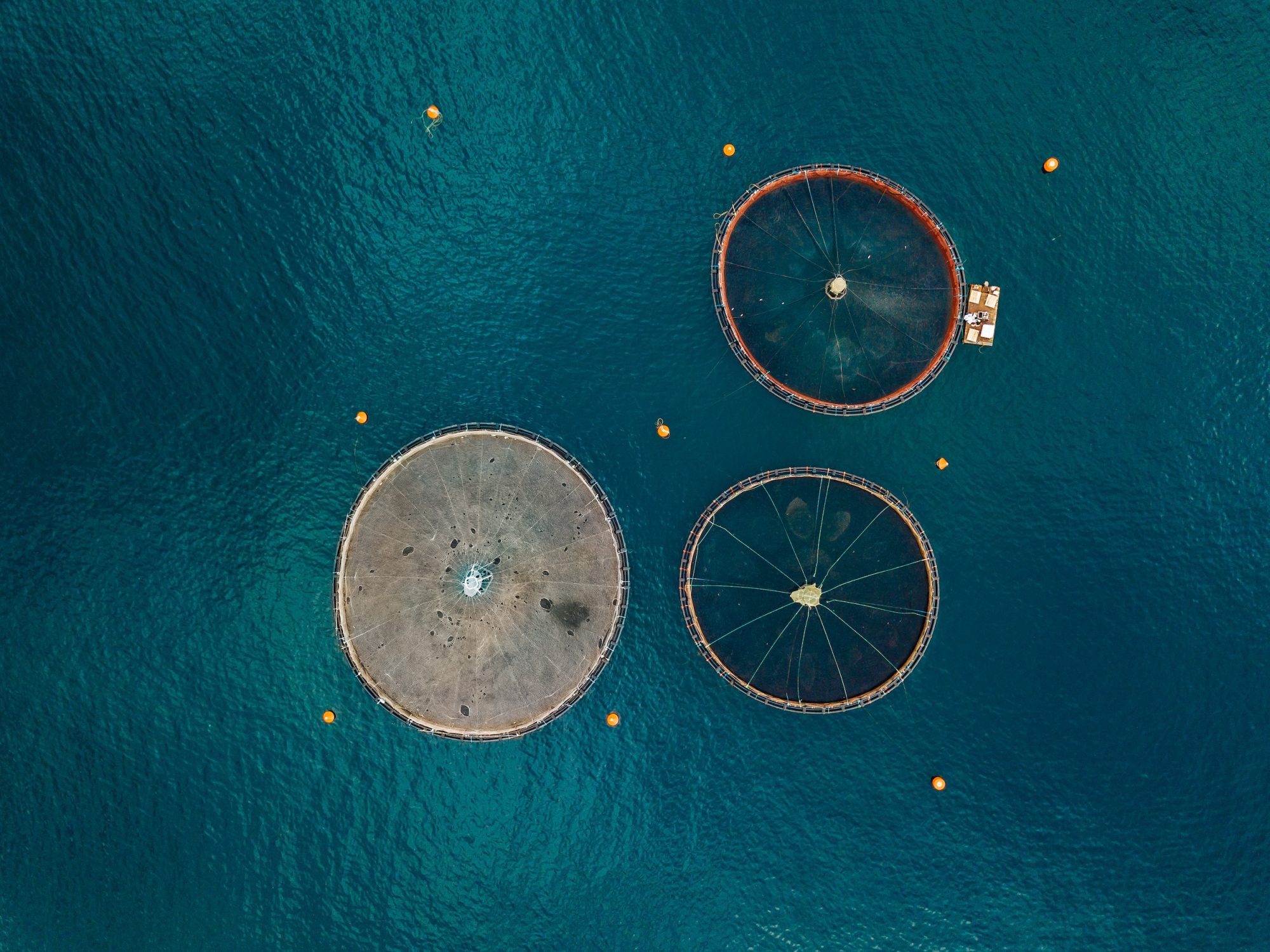‘Qatar Achieved Aquaculture Successes in Contribution to Food Security’
‘قطر حققت نجاحات في مجال الاستزراع السمكي إسهاما بتحقيق الأمن الغذائي’
QNA
Doha: In light of the environmental challenges facing the world due to the economic crisis, as well as the climate change and instability in many regions; an urgent need stems in light of the large population growth to work hard to find the required balance between the concerning population growth and the limited natural resources in some countries.
Amid these challenging circumstances, the choice of investing in fisheries and aquaculture and conducting specialized research in those fields formed a necessity and an ideal choice to secure the local demand for food.
Fish and their products represent a chief valuable food source for many of the world’s population, making it significant to set plans and develop strategies to ensure sustainable fish resources and alleviate and reduce poverty rates in many world countries.
In this context, aquaculture is considered a leading project in the field of developing fisheries and providing food for the meantime, to become one of the pillars of economic and social development in many countries.
For all that, the State of Qatar has paid great attention to developing the aquaculture industry to increase production and raise the percentage of self-sufficiency in fish from other sources without resorting to excessive use of fisheries.
Pursuing that purpose, Qatar established the Aquatic and Fisheries Research Center Ras Matbekh in Al Khor, which was fully equipped with the latest technologies in aquaculture and entered the actual production phase in 2022 and achieved several successes and goals.
In an interview with Qatar News Agency (QNA), Head of the Aquatic and Fisheries Research Center Ibrahim Salman Al Mohannadi said that the State of Qatar made several achievements in aquaculture and shrimp farming. He pointed out that the center succeeded in producing Rabbit Fish – Safi, Grouper, and Yellowfin seabream – Sha’am hatchlings using the best product of Grouper and Yellowfin seabream at the local level due to the great successes in hatching local fish in large quantities.
In this regard, Al Mohannadi revealed that during 2022 more than five million fish fry were hatched, indicating that expanding in such projects is done through establishing coastal fish farms to fatten the fish fry produced by the center, thus contributing to achieving the food security.
He stressed that the Aquatic and Fisheries Research Center, the biggest of its kind in the MENA region, achieved all its environmental goals. He pointed out that more than one million fingerlings of Grouper and Yellowfin seabream were dropped into the sea to enrich the fish stock. In addition, the center also achieved its developmental goals, including producing around one million fish fry during 2022 and more than 6 million shrimp larvae.
The Head of the Aquatic and Fisheries Research Center Ibrahim Salman Al Mohannadi, explained in his interview with QNA that the types of aquatic organisms that are cultured in the center include local fish, which are (Hamour, Bream, Safi, and Subaiti) and non-qatari fish such as (European seabream) and crustaceans (white-legged shrimp, vannamei).
He stated that the volume of production for the past year reached about two million small grouper, Shaam and Subaiti fish, about 4 million larvae of the vannamei shrimp, and about 31,000 kilograms of shrimp, the marketing volume is (30) mg.
He said that the center uses the latest methods of fish technology and the biofloc system in shrimp farming, describing them as advanced farming systems, characterized by the use of small quantities of new marine water, with the recycling of what is in the tanks, which achieves high quality of farming water.
Regarding the contribution of fish farming projects in Qatar to achieving food security and the country’s need for this water wealth, Al Mohannadi stressed that fish farming projects in Qatar at the level of final production or what is known as fattening are still in their start, as there is one project and a fish farm in floating cages in the sea has an annual production capacity of about 2000 tons. However, it has not yet reached the stage of production at maximum capacity, while also the contribution of fish farming to food security is still limited.
He stressed that there is an urgent need to increase local fish production through the establishment of fish farms to achieve food security, especially since fisheries have reached the maximum level of sustainable exploitation, pointing out that any increase in the fishing effort will lead to the depletion of fish stocks, and therefore the only solution to increase local fish production is by investing in fish farms.
Al Mohannadi stressed the role of the Aquatic Research Center and its projects in protecting, preserving and developing fish stocks in the country, pointing out that the center has contributed to protecting fish stocks from depletion, and increasing the live mass of this stock by landing about 6 million fingerlings of hamour and shaam fish to enrich the fish stock, and said that fish statistics for the year 2022 indicate a clear increase in the volume of local production from fisheries of hamour fish.
He revealed the targeted quantities of production for the next three years, including the production of 3.3 million hamour, bream, pure sabaiti and chakra fish in 2023 and 2024, and 4.4 million of these same species in 2025.
In addition, Qatar, in accordance with the directives of the wise leadership, pays increasing attention to maximizing the role of the private sector in the economic fields. Therefore, it has proposed projects for fish and shrimp farming, which are currently being implemented by private sector companies using the latest scientific technologies in this field, taking into account all environmental requirements that guarantee the safety of marine resources.
In this regard, Al Mohannadi stressed that the private sector plays an important role in the completion of fish farming projects, as a contract was signed with a national company to operate fish and shrimp hatcheries at the Aquatic Research Center, and a fish farm and another for shrimp were established by this sector.
He explained that the incentives offered by the State of Qatar to the private sector to invest in fish farming projects include marine sites and lands in the industrial area for a nominal rent, as well as providing young fish and shrimp larvae for free for a limited period, to encourage it to obtain young shrimp from the center’s hatcheries.
He touched on the quality of fish farming projects in Qatar, their size and production estimates, explaining that there is a fish farm in floating cages in the sea with an annual production capacity of 2,000 tons of fish, and a shrimp farm with a production capacity of 300 tons of shrimp in the experimental production stage, as well as a local shrimp farm with a production capacity of 1000 tons of shrimp per year and it is in the construction phase.
He concluded his dialogue by stressing the State of Qatar’s interest in fish farming projects, given its vitality and contribution to achieving food security and protecting fish stocks.
Al Mohannadi noted that the environment of the State of Qatar is a Gulf environment characterized by high temperatures, and helps the rapid growth of local fish, but he warned that the shallowness of marine waters is considered the biggest challenge for the aquaculture industry, because coastal fish farms, or in floating cages, need the presence of deep marine waters close to the coast.
قنا
الدوحة: في ظل التحديات البيئية والاجتماعية التي يواجهها العالم على خلفية الأزمة الاقتصادية، فضلا عن التغيرات المناخية وحالات عدم الاستقرار التي يشهدها الكثير من المناطق، تبرز الحاجة الملحة في ظل النمو السكاني الكبير، إلى العمل الجاد لإحداث التوازن المطلوب بين هذه الزيادة السكانية المقلقة والموارد الطبيعية المحدودة لدى بعض الدول.
ووسط هذه الظروف والتحديات، كان خيار الاهتمام بالاستثمار في الثروة السمكية وتربية الأحياء المائية وإجراء البحوث المتخصصة في هذه القطاعات، أمرا ضروريا وخيارا مثاليا لتأمين حاجة السكان من الغذاء.
وتشكل الأسماك ومنتجاتها مصدرا هاما للغذاء الصحي المفيد لعدد كبير من سكان العالم، ما جعل من المهم إعداد الخطط ووضع الاستراتيجيات لضمان موارد مستدامة منها، وتخفيف وخفض نسب الفقر في الكثير من دول العالم.
كما يعتبر الاستزراع السمكي في هذا السياق، من المشاريع الرائدة في مجال تنمية الثروة السمكية، وتوفير الغذاء في وقتنا الحاضر، ليصبح أحد محاور التنمية الاقتصادية والاجتماعية في العديد من الدول.
لكل ذلك أولت دولة قطر اهتماما بالغا بتطوير صناعة الاستزراع السمكي بهدف زيادة الإنتاج، ورفع نسبة الاكتفاء الذاتي من الأسماك من مصادر أخرى دون اللجوء للاستغلال المفرط للمصايد السمكية.
وأنشأت الدولة لهذا الغرض مركز أبحاث الأحياء المائية، في “راس مطبخ” بمنطقة الخور، وتم تجهيزه بأحدث التقنيات في نظم الاستزراع السمكي، ليدخل طور الإنتاج الفعلي منذ عام 2020، ويحقق الكثير من النجاحات والأهداف التي تأسس لأجلها.
ويقول السيد إبراهيم سلمان الحسن المهندي، رئيس مركز أبحاث الأحياء المائية، في حوار لوكالة الأنباء القطرية /قنا/، إن دولة قطر حققت نجاحات في مجال الاستزراع السمكي والروبيان، مشيرا إلى أن المركز نجح في إنتاج كميات من صغار أسماك الصافي والهامور والشعم، باستخدام أفضل منتج لصغار أسماك النوعين الأخيرين على المستوى المحلي، وذلك نظرا إلى وجود نجاحات كبيرة في تفريخ الأسماك المحلية بكميات كبيرة.
وكشف المهندي في هذا السياق عن أنه قد تم خلال عام 2022 تفريخ أكثر من 5 ملايين إصبعية سمكية، مبينا أن عملية التوسع في مثل هذه المشاريع تكون من خلال إنشاء مزارع سمكية ساحلية لتسمين صغار الأسماك التي يتم ينتجها المركز، بما يساهم في تحقيق الأمن الغذائي.
وأكد على أن مركز أبحاث الأحياء المائية، وهو الأكبر من نوعه في المنطقة العربية وشمال إفريقيا، قد حقق جميع أهدافه البيئية، مشيرا لإنزال أكثر من مليون إصبعية سمكية من أسماك الهامور والشعم في البحر لإثراء المخزون السمكي، بالإضافة إلى الأهداف التنموية ومنها إنتاج حوالي مليون من صغار الأسماك خلال عام 2022، وكذا إنتاج أكثر من 6 ملايين يرقة روبيان.
وأوضح السيد إبراهيم سلمان الحسن المهندي، رئيس مركز أبحاث الأحياء المائية، في حواره لـ/قنا/، أن أنواع الأحياء المائية التي يتم استزراعها في المركز تشمل الأسماك المحلية وهي (الهامور – الشعم – الصافي – السبيطي) والأسماك غير المحلية مثل أسماك (السيبريم الأوروبي) ومن القشريات (الروبيان ذو الأرجل البيضاء، والفانامي).
وذكر أن حجم الإنتاج للعام الماضي وصل لحوالي مليونين من صغار أسماك الهامور والشعم والسبيطي، وحوالي 4 ملايين من يرقات الروبيان فانانيي وحوالي 31000 كيلوغرام من الروبيان حجم التسويق (30) ملجم.
وقال إن المركز يستخدم أحدث طرق تكنولوجيا الأسماك ونظام “البيوفلوك” في استزراع الروبيان، واصفا إياها بأنها أنظمة استزراع متطورة، تتميز باستخدام كميات قليلة من المياه البحرية الجديدة، مع إعادة تدوير ما هو موجود في الخزانات، ما يحقق جودة عالية لمياه الاستزراع.
وحول مساهمة مشاريع الاستزراع السمكي في قطر، في تحقيق الأمن الغذائي وحاجة البلاد من هذه الثروة المائية، أكد على أن مشاريع الاستزراع السمكي في قطر على مستوى الإنتاج النهائي أو ما يعرف بالتسمين لا تزال في بداياتها، حيث يوجد مشروع واحد ومزرعة سمكية في الأقفاص العائمة في البحر تصل طاقة إنتاجها السنوية لحوالي 2000 طن، إلا أنها لم تصل إلى الآن لمرحلة الإنتاج بالطاقة القصوى، في حين لا تزال أيضا مساهمة الاستزراع السمكي في الأمن الغذائي محدودة.
وشدد على وجود حاجة ماسة لزيادة الإنتاج السمكي المحلي من خلال إنشاء المزارع السمكية لتحقيق الأمن الغذائي، خاصة وأن المصايد السمكية قد وصلت للحد الأقصى من الاستغلال المستدام، لافتا إلى أن أي زيادة في جهد الصيد، ستؤدي إلى استنزاف المخزون السمكي، وبالتالي يكمن الحل الوحيد لزيادة الإنتاج السمكي المحلي بالاستثمار في المزارع السمكية.
وحول ما يتعلق بأنواع الاستزراع السمكي في قطر وأكثرها رغبة من حيث الأهمية الاقتصادية، لفت إلى أن أنواع الأسماك المستزرعة في قطر هي أسماك بحرية تشمل الهامور والشعم والصافي، إضافة إلى السيبريم الأوروبي والبلطي وهو من أسماك المياه العذبة، علاوة على القشريات وهي الروبيان من نوع فانامي، مبينا أن أكثر الأسماك المستزرعة ذات الأهمية الاقتصادية هما الهامور والصافي.
وشدد المهندي على دور مركز أبحاث الأحياء المائية ومشاريعه في حماية المخزون السمكي في البلاد والمحافظة عليه وتطويره، مشيرا إلى أن المركز ساهم في حماية المخزون السمكي من الاستنزاف، وزيادة الكتلة الحية من هذا المخزون من خلال إنزال حوالي 6 ملايين من إصبعيات أسماك الهامور والشعم لإثراء المخزون السمكي، وقال إن الاحصائيات السمكية لعام 2022 تشير إلى زيادة واضحة في حجم الإنتاج المحلي من المصايد السمكية لأسماك الهامور.
وكشف عن الكميات المستهدفة من الإنتاج للأعوام الثلاثة القادمة، ومنها إنتاج 3.3 مليون من أسماك الهامور والشعم والسبيطي الصافي والشقرا في كل من عامي 2023 و2024 و4.4 مليون من هذه الأنواع ذاتها في عام 2025.
إلى ذلك تولي قطر وفقا للتوجيهات السامية للقيادة الرشيدة اهتماما متزايدا بتعظيم دور القطاع الخاص في المجالات الاقتصادية، ولذلك طرحت مشاريع لاستزراع الأسماك والروبيان، يتم تنفيذها حاليا من قبل شركات القطاع الخاص باستخدام أحدث التكنولوجيات العلمية في هذا المجال، مع مراعاة كافة الاشتراطات البيئية التي تضمن سلامة الموارد البحرية.
وشدد المهندي في هذا الخصوص على أن القطاع الخاص يضطلع بدور هام في إنجاز مشاريع الاستزراع السمكي، حيث تم التعاقد مع شركة وطنية لتشغيل مفرخات الأسماك والروبيان في مركز أبحاث الأحياء المائية، كما تم إنشاء مزرعة أسماك وأخرى للروبيان من قبل هذا القطاع.
وأوضح أن المحفزات التي تقدمها دولة قطر للقطاع الخاص للاستثمار في مشاريع الاستزراع السمكي تشمل مواقع بحرية وأراضي في المنطقة الصناعية بإيجار رمزي، وكذلك تقديم صغار الأسماك ويرقات الروبيان مجانا لفترة محدودة، لتشجيعه للحصول على صغار أسماك الروبيان من مفرخات المركز.
وتطرق لنوعية مشاريع الاستزراع السمكي في قطر، وحجمها وتقديرات إنتاجها، موضحا أنه توجد مزرعة سمكية في الأقفاص العائمة في البحر تبلغ طاقة إنتاجها السنوي 2000 طن من الأسماك، ومزرعة روبيان طاقة إنتاجها 300 طن من الروبيان في مرحلة الإنتاج التجريبي، وكذلك مزرعة روبيان محلية طاقة إنتاجها 1000 طن من الروبيان سنويا وهي في مرحلة الإنشاءات.
واختتم حواره بالتأكيد على اهتمام دولة قطر بمشاريع الاستزراع السمكي، نظرا لحيويتها ومساهمتها في تحقيق الأمن الغذائي، وفي حماية المخزون السمكي، ونوه إلى أن بيئة دولة قطر هي بيئة خليجية تتميز بارتفاع درجات الحرارة، وتساعد على سرعة نمو الأسماك المحلية، لكنه نبه إلى أن ضحالة المياه البحرية، تعتبر أكبر تحد لصناعة الاستزراع السمكي، لأن مزارع الأسماك الساحلية، أو في الأقفاص العائمة، تحتاج إلى وجود مياه بحرية عميقة قريبة من الساحل.
وبلا شك فإن كل هذه الجهود والمشاريع توضح مدى حيوية مشاريع الاستزراع السمكي والاستثمار فيها، كونها من المشروعات الهامة التي تساهم في زيادة الإنتاج المحلي من الأسماك، كما أنه إلى جانب أهميتها الاقتصادية، فإن لها أبعادا بيئية تتمثل في الحفاظ على المخزون السمكي، وتخفيف جهد الصيد على الأسماك خاصة تلك التي عليها طلب عال مثل أسماك الهامور، فضلا عن كونها من أهم الركائز الأساسية لزيادة نسبة الاكتفاء الذاتي من الأسماك، والمحافظة على البيئة البحرية والتنوع البيولوجي فيها.




